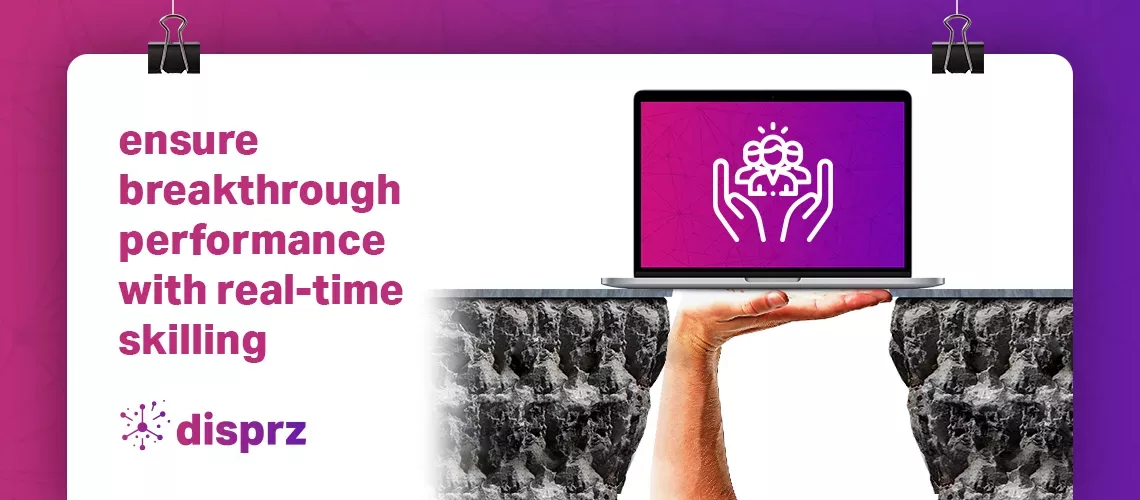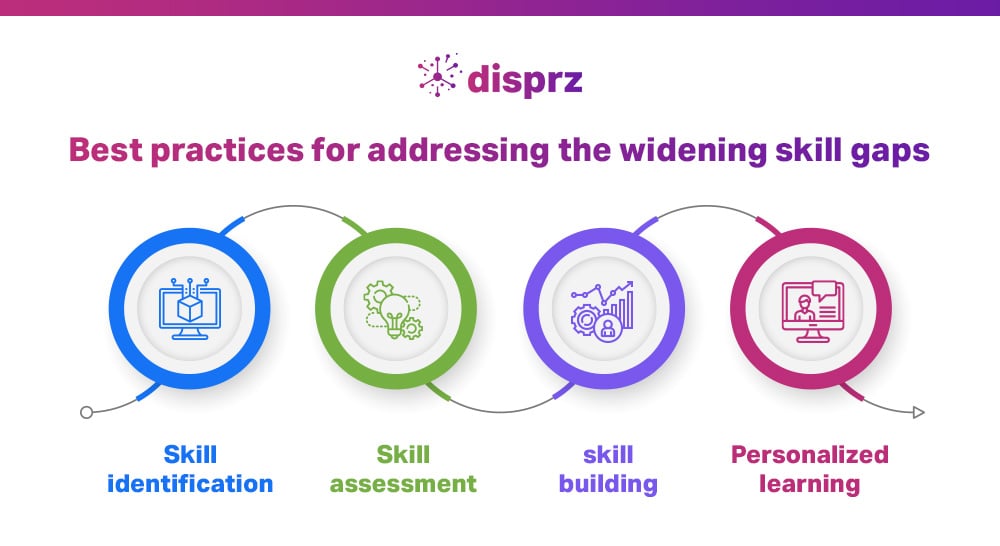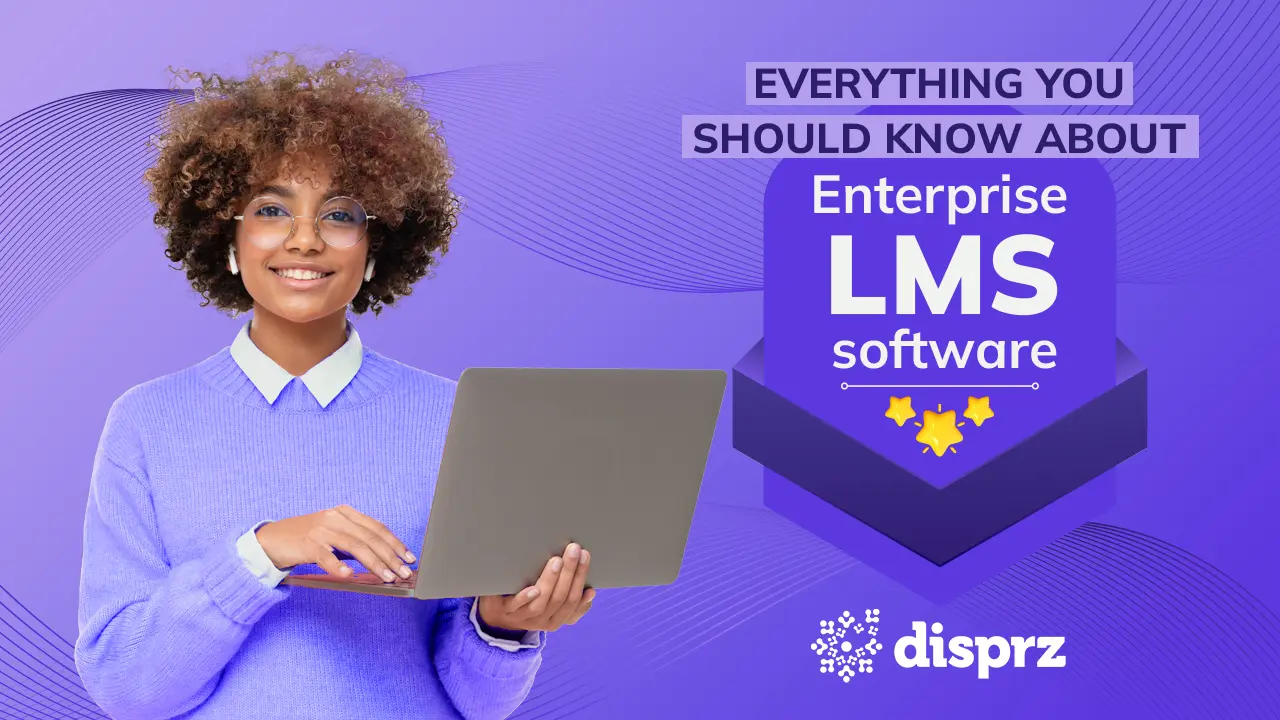
6 min read
• 22 Apr 2024
Identify and Bridge the Widening Skills gap for Knowledge Workers
is the widening skills gap crushing your business? Learn to identify & assess talent gaps to prepare your knowledge workers to win in the digital world.
-
eBookEmployee Upskilling - A Detailed Blueprint For Building A Skills-Driven Learning Culture
Knowledge workers are an intangible asset of a business; however, without the right skill set, they fail to capitalize on lucrative opportunities. This detrimental skills gap leads to poor performance and often affects your business goals.
Whether it is BFSI or IT, every industry is challenged by the digital disruption that’s triggered changes in customer behavior. Most knowledge workers lack the necessary skills to address the changing market and customer demands.
87% of companies say they have a skills gap or expect to within a few years.
A skills gap can lead to higher risk in a digitally advanced world. For instance, if the knowledge worker fails to protect the data from malicious attempts, it can harm the company’s reputation, trigger legal action and even lead to hefty fines/ransoms. Accenture, a multinational IT consulting firm, was asked for a ransom of $50 million when their 6TB of files were stolen from their system.
Moreover, the rapid advancement in smart technologies, AI, and cloud computing is changing the way of work and widening the skills gap. Knowledge workers need continuous skilling opportunities through on-the-job training to respond to challenges posed by digital transformation.
As per research, 47% of employers have deployed on-the-job training to fill skills gaps.
Types of Skills Gap
1. Individual Skills Gap
When an individual lacks the necessary job skills, it creates a technical or soft skills gap. Technical skills gaps involve proficiency in software or tools, addressed through targeted training. Soft skills gaps, like communication or adaptability, impact teamwork and require nurturing.
2. Organizational Skills Gap
Company-wide skills deficiencies hinder strategic goals. Leadership skills gaps impede team success, mitigated by leadership programs. Functional skills gaps affect departmental performance and demand tailored training. Sectoral skills gaps arise from industry advancements, addressed through collaborations. Regional skills gaps stem from workforce mismatches and necessitate local development efforts.
3. Generational Skills Gap
Varying work preferences between generations, like Baby Boomers, Millennials, and Generation Z, require nuanced workplace policies to ensure productivity and harmony. Understanding and accommodating these differences fosters a cohesive work environment, where each generation's strengths contribute to overall success. Effective communication and tailored incentives can bridge these skill gaps, fostering mutual understanding and collaboration across generations.
4 Best practices for addressing the widening skills gap in knowledge workers

Are the widening skill gaps crushing your business? If your company wants to stay competitive in the ever-changing market, your knowledge workers need the apt set of skills to stay productive and innovate. So it is imperative to develop rights skills.
Here are a few best practices to address your skills gap and prepare your knowledge workers to win in the digital-first world.
1. Skill Identification
When upskilling your knowledge workers, finding the right skills for success is crucial. Each role in your organization will need a different set of skills. For instance, a business analyst will need consultative, analytical thinking, process modeling, and relation-building skills, while a financial analyst will need accounting, financing modeling, project financing, and problem-solving skills.
You must define skills for each role in your organization. You can leverage modern technologies to map skills and identify your skills gap. For instance, Disprz LXP(Learning Experience Platform) enables you to identify and benchmark skills against industry standards through role-based skilling. You can determine and define functional, leadership, digital, and meta-skills for different roles.
2. Skill Assessment
Next, you must determine if your knowledge workers have the essential skills for performing a job efficiently. Through self or manager assessment, you can find out which skills the employees have and which they need to develop to perform their tasks efficiently.
It is crucial to determine each skill’s proficiency level by finding the skill score. For instance, you can ask the manager and employees to rate the employee on a scale of 1 to 5 for a certain skill. If both rate the employee 2 for a particular skill, then the skills score will be 2, and they will know where they need to put in more effort. Identifying the skill score is crucial to bridging your skills gap.
3. Skill building
78% of leaders say that skill-building is crucial to long-term growth.
Now that you have clear visibility into the skill score, the next step would be to focus on the skill-building process. Based on the learners’ interest and proficiency level for each skill, curate necessary resources and build a content repository to create a skilling journey.
Leveraging the right skilling tool can help you simplify this process. For instance, In Disprz LXP, your learners will get an auto-created personalized journey based on their skill gap from a content repository that’s mapped to the skills.
4. Personalized learning
Give your knowledge workers the freedom to engage in courses that align with their career aspirations through personalized learning. Interest-based learning experiences motivate employees to learn more and expand their capabilities.
Moreover, AI-powered recommendations save them from the hassle of finding resources to enhance their skillset for moving to the next role.
Bridge Your Skills Gap With Disprz
Skills are changing at a fast pace with new advancements in different industries. The widening skills gap of knowledge workers needs real-time attention to ensure breakthrough performance in any circumstances. Instead of focusing on obsolete training methods, jump on the skilling bandwagon to make your knowledge workers more agile and future-ready. A skilling tool like Disprz LXP can help you in end-to-end skill development, from identifying the right skills to building them while providing an impactful learning experience.

About the author

Debashree Patnaik
Debashree is a seasoned content strategist at Disprz.ai, specializing in enterprise learning and skilling. With diverse experience in B2B and B2C sectors, including ed tech, she leads the creation of our Purple papers, driving thought leadership. Her focus on generative AI, skilling, and learning reflects her commitment to innovation. With over 6 years of content management expertise, Debashree holds a degree in Aeronautical Engineering and seamlessly combines technical knowledge with compelling storytelling to inspire change and drive engagement.
More Resources
4 min read
• 15 Apr 2024
Unlocking the Power of Managerial Engagement in Talent Development
4 min read
• 09 Apr 2024
Nurturing Excellence in Building Leadership Pipelines
Sign up to get free resources and stay up to date with Disprz!
Discover how Disprz can align learning and upskilling with your desired business outcomes.





